Yesterday the ABS released a set of corrective services data that shows us how many people are sitting in the big house at any given time. Among the figures there were quite a few surprises, as well as a quite few unfortunately predictable results.
First up, the national figures by state and territory. For all these we’ll use a rate of how many people are incarcerated per 100,000 of the adult population.
That pretty much speaks for itself. We can also measure the change in the imprisonment rates since 2006 – in both raw rate changes and as a percentage change in the rate since 2006 – which was only 3 years ago.
While the NT has experienced the largest change in the raw rate, SA and WA have had relatively larger increases. Interesting is how us law abiding citizens of Qld, Tassie and the nations capital have witnessed a reduction in imprisonment rates over the last 3 years.
We can also break these results down by gender.
While the rate of imprisonment among males is generally a large magnitude of order higher than that of females in every State and Territory, since 2006 there has been a larger increase (or in the case of Qld, a smaller decrease) in female imprisonment rates than that of their male counterparts.
The other figures released look at indigenous imprisonment rates, calculated on a per 100,000 of the indigenous population basis.This isnt a pretty story.
With the ACT and Tasmania having only very small indigenous populations, the only good news here is among the male indigenous imprisonment rate in Qld, sightly dropping. Some of the other figures are astonishing – a 50% increase in the female indigenous imprisonment rate in the NT over the last 3 years is incredible.

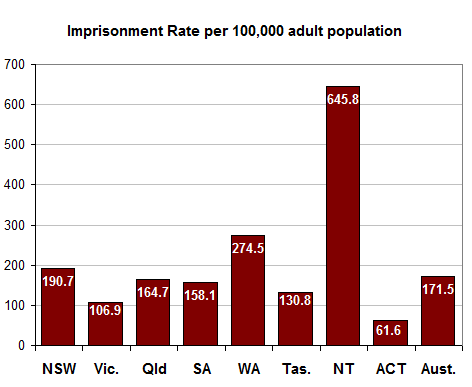
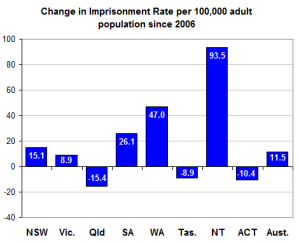

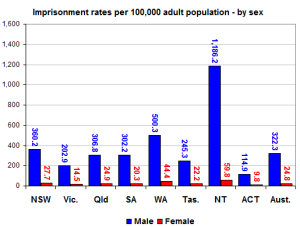
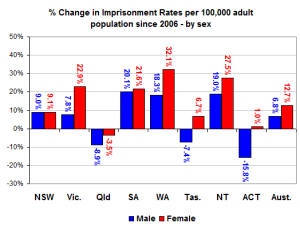
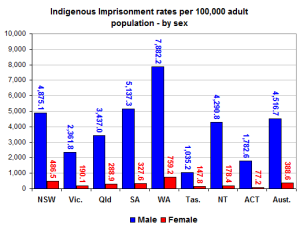
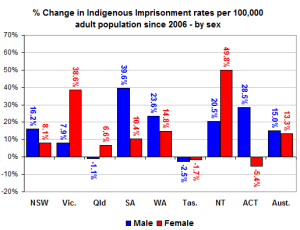






Crikey is committed to hosting lively discussions. Help us keep the conversation useful, interesting and welcoming. We aim to publish comments quickly in the interest of promoting robust conversation, but we’re a small team and we deploy filters to protect against legal risk. Occasionally your comment may be held up while we review, but we’re working as fast as we can to keep the conversation rolling.
The Crikey comment section is members-only content. Please subscribe to leave a comment.
The Crikey comment section is members-only content. Please login to leave a comment.